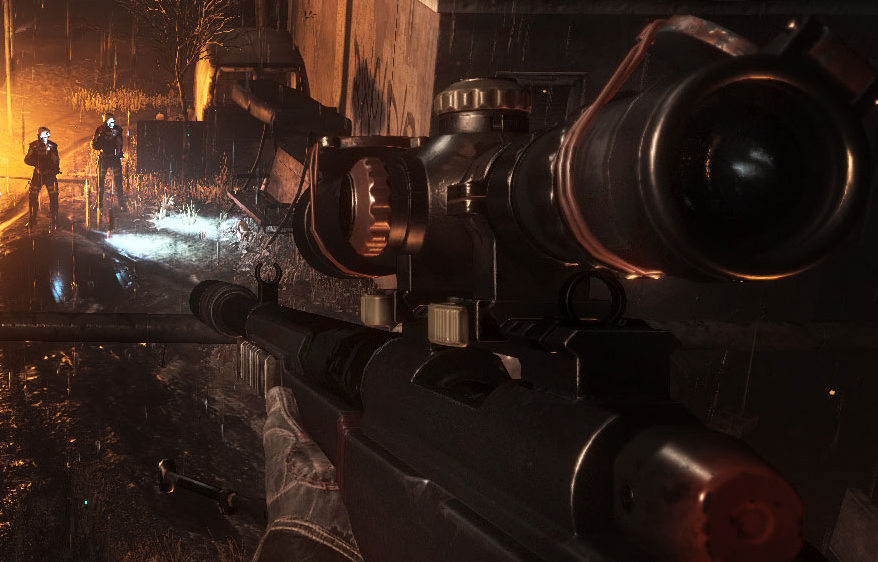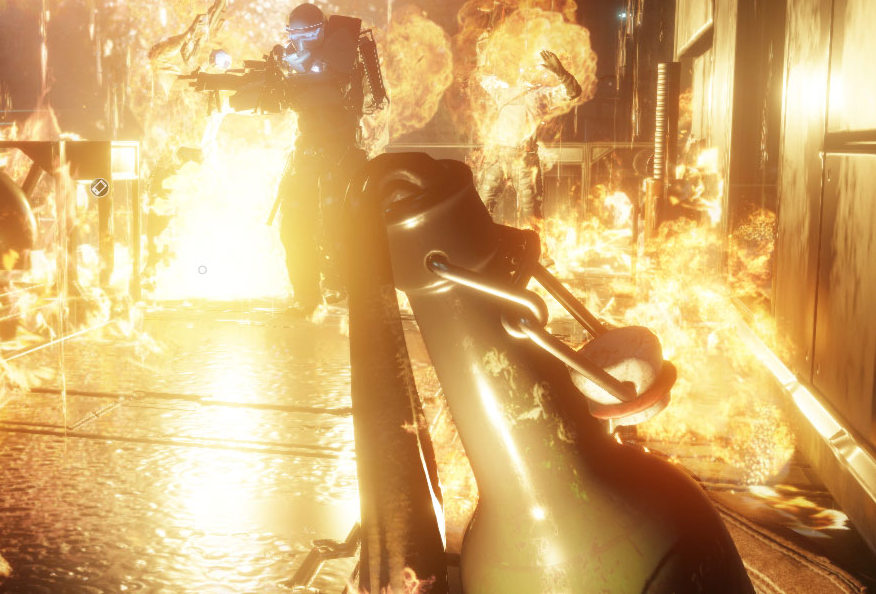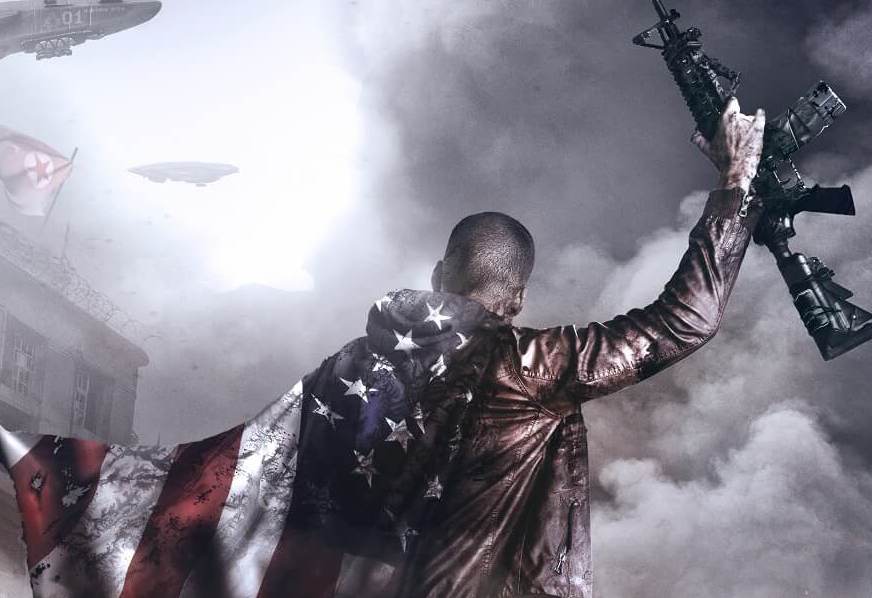By the most recent estimate of the Southern Poverty Law Center (SPLC), there are just under 300 non-governmental militias active in the United States. Though the specifics of their agendas vary, their shibboleth is what’s often labeled “insurrection theory,” the supposed right of the body politic to take up arms against tyranny, no matter its source. What constitutes tyranny is rather open to interpretation—one group, Posse Comitatus, rejects the validity of both fiat money and driver’s licenses, along with more familiar grievances about income tax and gun control—but, in every case, there is a common antagonist: an overbearing, conspiratorial government intent upon suppressing the “freedom” of the American citizen.
Such groups are rarely taken seriously in popular media, and rightly so: virtually every militia associated with the so-called “patriot movement” espouses, implicitly or explicitly, some version of white supremacism as an integral component of their ideology (the SPLC attributes the growth of these groups since 2008 in part to “an angry backlash against non-white immigration …and an African-American president”). Their sense of “freedom,” such as it is, is highly selective, keyed to the tradition of white dominance that is threatened by an increasingly diverse nation. But the fantasy of open rebellion is potent and pervasive, not least of all because revolution sits squarely at the center of our myths of national origin. As a result, especially in videogames and in film, there exists a genre of works that center on “ordinary” Americans rising up to recover “freedom” from the hands of occupying foreign army, enacting the lurid dream of far-right militias against a less-treasonous foe than the federal government.
It’s this tradition that gives us Dambuster’s lamentable Homefront: The Revolution, the sequel to THQ’s Homefront (2011) that neither critics nor players asked for. Homefront was, in many ways, a ludic adaptation of Red Dawn (1984), a classic piece of Cold War cinema that was recently remade, though not well, to reflect a new era of political boogeymen. In Red Dawn, a high school football team from the fictional any-town-every-town of Calumet, Colorado arms itself to usurp invading Soviet, Nicaraguan, and Cuban armies (the original Homefront takes place in Montrose, Colorado). Homefront: The Revolution’s designs, though, are somewhat more ambitious: we’re now in Philadelphia, and therefore re-performing the myths of the American Revolution, piecing together an ad-hoc resistance to depose a technologically superior foe. In Homefront: The Revolution, this means doing things like “liberating” surveillance drones in the name of American “freedom,” a task presented to the player with no apparent sense of irony.

In fact, just about everything in Homefront: The Revolution is painfully stupid. The speculative fiction that sets up the events of the game falls well short of coherent, and much less believable, but it has something to do with the national debt and an overreliance on foreign products produced by that titan of industry, North Korea. Occupied Philadelphia is a strange place, with arms dealers who operate in plain sight of security forces, and security forces whose effectiveness is greatly reduced by their apparent inability to walk up stairs. Most of the game is spent sneaking around/running from/shooting at North Korean patrols, sowing discontent among an ungrateful populace, and enduring the witless bits of phatic dialogue from your psychopathic allies, many of who sport Boston accents of dubious provenance. “Yeah, fuck ‘em up! Fuck ‘em up! Fuck!, etc.” one spouts, apropos of nothing, as you fumble through a crashed subway train, scanning for the components of a pipe bomb with which to fuck them up.
The ironies—OK, idiocies—of Homefront: The Revolution are so rich and so pervasive that, at times, it’s hard not to think that you’re part of an elaborate satire. The occupying Korean People’s Army (KPA) has divided Philadelphia into three zones—red, yellow, and green—the last of which is the seat of the KPA, who, of course, have made Independence Hall their headquarters. If the “Green Zone” rings a (liberty) bell, it’s because it was also the name given by the Coalition Provisional Authority to the heavily-fortified International Zone of Baghdad, where was overseen disastrous “reconstruction” of Iraq. For a moment, it seemed like Homefront: The Revolution might draw a parallel between two occupying forces engaged in a process of “nation building” in the name of liberty (Operation Enduring Freedom, even now, remains the official name for the global War on Terror). But then one of your bibulous companions barks out something like “the fucker is trying to sell us out to the Norks for a bowl of rice!” or any other of the game’s juvenile, jingoistic clichés, and whatever self-awareness Homefront: The Revolution might have stood upon the verge of dissipates like so much dust tossed up by a desert storm.
At many points, Homefront: The Revolution begs comparison to Ubisoft’s The Division, another recent open-world game premised on the breakdown of an American society undone by its greed. Beyond genre, both games are centered on relentless political violence against targets who can be gunned down in the street with little guilt, and less questioning. But the methods by which they justify their premise and the killing it entails diverge in telling ways. As Kill Screen’s Gareth Damian Martin wrote in his review of The Division, the game tees up a trinity of “soft political targets”—rioters, looters, the urban poor—whose disrespect for property marks them for summary execution by the player, the sharpened tip of the neoliberal spear. Homefront: The Revolution’s justifications are equally vile, but in different ways: ask your sociopathic resistance lackeys what they’re fighting for, and in between boasts about disfiguring and dismembering captured security forces, they’ll give you exactly one answer: freedom.
Right!
But what exactly does “freedom” mean in Homefront: The Revolution? How does this particular band of revolutionaries define it, and how did they come to agree upon this definition? Who does this sense of freedom serve, and in what ways? Alas, the dozen or so resistance fighters who offer their thoughts on the justifications for their armed revolt are stupefyingly inarticulate. To them, whatever “freedom” means is so obvious and transparent that it’s not even worth questioning. Freedom, to them, belongs to what Roland Barthes called “myth,” a form of depoliticized speech that places a concept beyond reproach, invoked not to open up debate but to shut it down. Put in these terms, this mythic freedom sounds hopelessly uncritical and plainly ignorant, but this exact discourse of “freedom” has a history and a politics, that weaves through our national past, from the conflict Homefront: The Revolution purports to restage, to the birth of the postwar economy and suburbanization, to the vile right-wing militias of our present day.
It shouldn’t surprise you to learn that, like Homefront: The Revolution, the militia groups associated with the “patriot movement” also dredge the American revolution for their rhetoric (“don’t tread on me,” etc.) and iconography (Uncle Sam, the 13-star Betsy Ross flag, etc). The Three Percenters, one of the dozens of militias founded within weeks of Obama’s election, takes their name from the spurious apocryphal claim that the Continental Army constituted only three percent of the American population circa 1776. One now-defunct anti-communist organization labeled itself the Minutemen. These are, of course, very selective interpretations of history—it takes some serious historiographical gymnastics to reimagine colonial partisans as defenders of industrial capitalism—but history only exists as interpretation, and so is told and retold, made and made anew by our representations and uses of it. Videogames are no exception.

I’ll come clean here—frankly, I don’t give a damn whether or not Homefront: The Revolution is fun (it’s not), or whether it improves upon its mundane-but-competent predecessor (nope), or if it adds anything new and meaningful to the overstuffed genre of near-future military shooters (absolutely not). What matters to me is how the game wields the worst, most one-dimensional caricatures of American history to explain (or not) the “freedom” that’s apparently worth torturing and stealing surveillance drones for, thereby subverting the very principles that make a democratic republic worth defending. But most of all, I’m concerned about the ideas this corroded sense of our national past can launder. At minimum, it gives us mediocre videogames; at its worst, it enables groups like Posse Comitatus and Oath Keepers, who veil their most repugnant, openly racist ideologies behind an untroubled discourse of “freedom” propped up by ignorant productions like Homefront: The Revolution.
History is inescapably pliable, but the appropriation of the American revolution as the gold-standard of American freedom by borderline treasonous, openly racist militias of the present day is especially pernicious. What’s at stake for so many “patriots” is their particular understanding of freedom, a “freedom” that’s threatened by the fear of a black president, gun control, fiat money, and non-white immigration. This is, in other words, a selective idea of freedom, and so only available to a selective few. Put bluntly, the problem with Homefront: The Revolution is that it largely reproduces this laughably ignorant notion of “freedom” that enables most rancid aspects of the patriot movement. It is a freedom for some, premised on, and at the expense of, the oppression of others. And though it’s true that Homefront: The Revolution is nowhere near as vile as anything that spews from the hateful maws of the “patriot movement,” let’s not confuse moderation with neutrality.
Homefront: The Revolution chokes on the myths of freedom and progress that excuse our nation’s most shameful episodes, and then it begs for more. Just one example: as you pick away at the Korean People’s Army, you eventually make your way into their “Green Zone,” Philadelphia’s monied, historic center. In the hours leading up to your incursion, the game positions its liberation as your ultimate goal, as if those pristine green spaces, immaculate facades, and light-soaked lofts have been the beating heart of American freedom all along. And, for some, they were. In the 1950s, homeownership was inseparable from both citizenship and patriotism, leading the real-estate icon William Levitt to declare that “no man who owns his house can be a communist.” But there’s a dissonance between the myth of the “white picket fence” and the politics of its era: owning and maintaining property might have been a sign of American freedom, but it was not equally available to every citizen. Black veterans of World War II were systematically denied access to low-interest, federally-backed loans, excluding them from the largest wealth building in American history. “They fought to save the world from tyranny,” Ta-Nehisi Coates writes of the 1.2 million black Americans who served in World War II, “only to find that tyranny had followed them home.”
But tyranny had been there from the start. “America,” Coates continues, “begins in black plunder and white democracy, two features that are not contradictory but complementary.” Even as the Continental Army fought to expel the British for the sake of American liberty, the nascent nation enriched itself through the exploitation of the enslaved. In American history, oppression is not the exception of the nation’s promise, but rather its rule. That a slave owner could sincerely state “all men are created equal” reveals just how perverse a refusal to question the terms of “freedom” can be. By extension, the empowered who benefit from this exclusionary sense of liberty have an incentive to keep it unquestioned—it is of no surprise that the militias that popped up in the wake of Obama’s election, those who champion the cause of an unexamined “freedom” so loudly, are overwhelmingly white.
A more competent game than Homefront: The Revolution might have used the caricatures that form your inner circle—the archetypal white-dad-action-hero, the sadistic pseudo-goth head of intelligence (read: torturer), the milquetoast white-collar collaborator, etc.—and explored what the freedom they’re fighting for means to them. But Homefront: The Revolution is anything but competent, and most of your allies simply cry “freedom” as background to your gunplay. The lone, dissenting voice among your lackeys is the the group’s doctor, who is concerned that all your rabble-rousing is making life worse for the resistance and the general populace alike (not an unreasonable claim). His reluctance to convert his clinics to weapons depots might have prompted some much-needed moral reflection about the events of Homefront: The Revolution, except that the doctor loudly proclaims that he, the game’s most prominent black character, would sooner be a “good man enslaved than a monster in the name of freedom.”
Above all, the problem with Homefront: The Revolution is that it, like so many others before it, presumes that whatever freedom is is obvious and transparent, and so can simply be acquired in a transaction like any other. But freedom is not earned: it is discovered and rediscovered, its meanings continually renewable as history lays the conditions for new and more ways of being in the world. As SCOTUS’s Justice Kennedy put it in his majority opinion legalizing same-sex marriage: “The generations that wrote and ratified the Bill of Rights and Fourteenth Amendment did not presume to know the extent of freedom in all its dimensions, and so they entrusted to future generations a charter protecting the right of all persons to enjoy liberty as we learn its meaning”. When we pretend, as Homefront: The Revolution does, to know what “freedom” is in advance, when we take the past not as our guide but as our warden, not as our shame but as a prison built of blind pride, we will always be the weaker for it.
Perhaps it’s unfair to expect that Dambuster, a British studio funded by the Austrian publisher Koch Media, would know these histories. And, sure, it’s hard to lay the blame at the studio’s feet; Homefront: The Revolution was sold off and passed around nearly a half-dozen companies over the course of its tortuous five-year development, and so it’s a challenge to say who is really responsible for this mess. If the tone of the game feels schizophrenic and ill-considered, it’s hard to imagine that’s a coincidence. But here’s the thing: the myths that animate the events of Homefront: The Revolution are both familiar and pervasive, and therefore represent a “default” way of thinking about American history. Their inclusion represents not a decision made, but something fallen back upon; not choice, but its opposite. The hapless writers at Dambuster are just along for the ride, swept up in the swift flow of history.
It’s long past time to choose something better.

In 1980, frustrated by the onanistic textbooks of his day, the dissident historian Howard Zinn published A People’s History of the United States, a veritable declaration of war on American history as it had been written and taught. Zinn’s American history is an Manichean parable of the (good) people rising up against the (evil) elite, written from the perspective of the marginalized voices sanitized or silenced by the teleological whitewash of untroubled progress and freedom that passes for history in most classrooms. Though more mainstream historians complained that Zinn’s history was hopelessly biased, they could hardly pretend that their own histories were not. All histories are partial, and so writing or using history is always a political act. The past may live on in the present, but history lives on as the present. And everywhere is someone’s homefront.
It was 13 years after A People’s History of the United States that Zinn published his fiery, iconoclastic autobiography, You Can’t Be Neutral on a Moving Train. That phrase echoed throughout the empty hours of Homefront: The Revolution I willed myself to suffer through. This game will slip drones over your eyes and stuff bullets in your ears. It will carry you from skirmish to sortie to subterfuge, assuring you that, as long as you’re shooting, you’re in the flow of progress. You can’t be neutral on a moving train; so Homefront: The Revolution marks the truth in its ubiquity.
You can’t be neutral in a fucking game.
For more about Kill Screen’s ratings system and review policy, click here.
